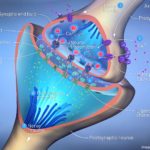If you keep up on brain news, you have frequently had this experience:
You read a newspaper headline or a blog link, and news of a potential discovery gives you an adrenaline rush:
Eating garlic may prevent age-related memory loss!
Radoiactive tracer shows effectiveness of cancer treatment!!
Ketamine may relieve depression!!!
Filled with enthusiasm, you read the accompanying article. Only to discover: the research was done on mice. The resulting adrenaline crash might cause you to desire chocolate-chip cookies (according to research done in mice).
Today’s News
Of course, mouse research is super important to establish basic biological processes. But, it doesn’t give teachers useful guidance. Ever.
(Now might be a good time to repeat one of my few absolute rules:
NEVER, NEVER, NEVER,
Change your teaching practice
Based on research
Into non-human animals.)
To highlight the foolishness of headline-hiding-the-mouse gambit, researcher James Heathers has created a vital new twitter account: @justsaysinmice.
That’s it. When you follow his account, you’ll get occasional updates with links to articles drawing breathless conclusions about research. Heathers wants you to know that the research shows results in mice.
As of this writing, Heathers’s account has 29 tweets, and north of 45,000 followers.
(By the way, we’ve written about Heathers’s skepticism before. He is developing a specialty in debunking inaccurate science communication.)
So, to tune up your skepticism skills, I encourage you to make @justsaysinmice a part of your twitter world.





Thank you for sharing information about How to be an Effective Skeptic during the ResearchEd Philadelphia conference. My fellow educators and I from Frederick County Public Schools in Maryland had a great time learning and collaborating with presenters, attendees, and debriefing with each other. One of the many important takeaways from our jaunt up north was your notes page on being an effective skeptic. As our county works to be make sharing research and research-informed practices more commonplace, we want to make sure that we are all better consumers of research and better at asking the important questions when it comes to hearing “what the research has to say.” Your well-crafted handout works much like a decision tree to help the novice work toward a better understanding of the research and its connection to work in various classrooms. I am asking if you wouldn’t mind sharing that handout with me digitally. My colleagues are eager to become more skeptical in the face of so much research. Thank you for your time.
Hello, Tammy–Thanks so much for your comment! You’ll have the handout in your inbox ASAP.
Cheers,
Andrew